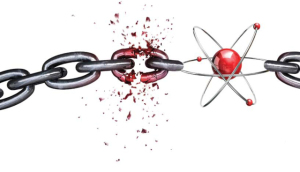by
Sean Ruck, Contributing Editor | June 20, 2011
From the June 2011 issue of HealthCare Business News magazine
The parallels between the U.S. gas crisis and the one affecting nuclear medicine are uncanny.
In 1973, the United States was faced with an unprecedented gas shortage. During the gas crisis, drivers were lined up at the pump for hours. Rationing meant drivers were only able to fuel on even or odd days of the month, depending on whether their license plate ended with an even or odd number.



Ad Statistics
Times Displayed: 2548
Times Visited: 12 Fast-moving cardiac structures have a big impact on imaging. Fujifilm’s SCENARIA View premium performance CT brings solutions to address motion in Coronary CTA while delivering unique dose saving and workflow increasing benefits.
For last summer’s medical imaging isotope shortage, thousands of patients were backlogged as they awaited needed procedures, in some cases for months at a time. “We saw wait time increasing and patients being turned down,” says Sergio Calvo, marketing director of molecular imaging with Siemens Healthcare. “Some patients who couldn’t wait went to other studies – so nuclear cardio went to echo-cardio for example, so that was a problem.”
Both shortages raised the awareness of our dependency on foreign supplies and prompted conversations about self-sufficiency as a nation, either by developing our own supplies or by improving technology to reduce our needs. For the gas crisis, economy cars were introduced to the market, while after the isotope shortage, single-photon emission computed tomography equipment has gotten more efficient. Doctors have also started turning to hybrids like SPECT/CT, which allow for ultrafast cardiac imaging, translating to less isotope use. Some facilities have even experimented with reducing the dose used during scans to see if they could provide the same quality of care.
A fragile chain
The fragility of the isotope supply chain gained worldwide attention less than two years ago, when an inspection of the National Reactor Universal in Chalk River, Ontario uncovered a leaky reactor vessel. In mid-May, 2009, the nearly 60-year-old reactor, which supplies half the United States’ supply of molybdenum-99, the isotope from which technetium-99m is derived, was taken offline for repairs. Initially estimated to take as long as eight months to complete, repairs actually took nearly twice that long, with the reactor finally reopening last August.
During the shutdown, the domestic nuclear medicine community turned to overseas reactors to alleviate the shortage. However, the condition of the Chalk River reactor spurred concerns about the remaining reactors and a thorough inspection was conducted for the High Flux Reactor in Petten, Netherlands, the second-largest supplier of Mo-99 for the U.S. Inspectors found corroded pipes in immediate need of repair, and that reactor was also taken offline for six months. Of the three remaining reactors in the world capable of supply moly at that time, two were used largely for research needs and not configured to produce radioisotopes year-round, and the Safari-1 in Pelindaba, South Africa, the only functioning major supplier of Mo-99, was also undergoing intermittent repairs.

